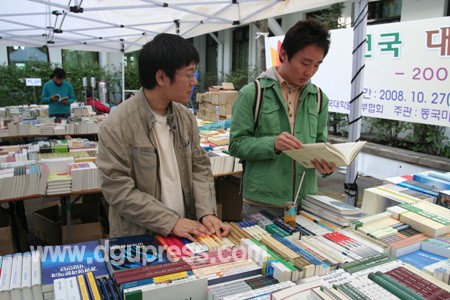출판부 도서 최대 80% 할인 … 오는 31일까지상록원 앞에서

전국 대학출판부 합동도서전 및 특별할인 행사가 지난 27일부터 5일간 상록원 앞에서 열린다.
동국미디어센터 출판사업팀(팀장=김윤길)이 주관하는 이번 행사는 오전 10시부터 오후 5시까지 운영된다. 전시 및 판매되는 도서는 2001년부터 올해까지 출간된 것으로, 동국대학교출판부의 도서 200여종을 포함한 전국 대학출판부에서 출간된 학술도서, 교재 등 5,400여권이다. 판매되는 도서는 20%할인되며 특히 동국대학교출판부 출간도서는 80%까지 할인된다.
김윤수 기자
yshero21@dongguk.edu

